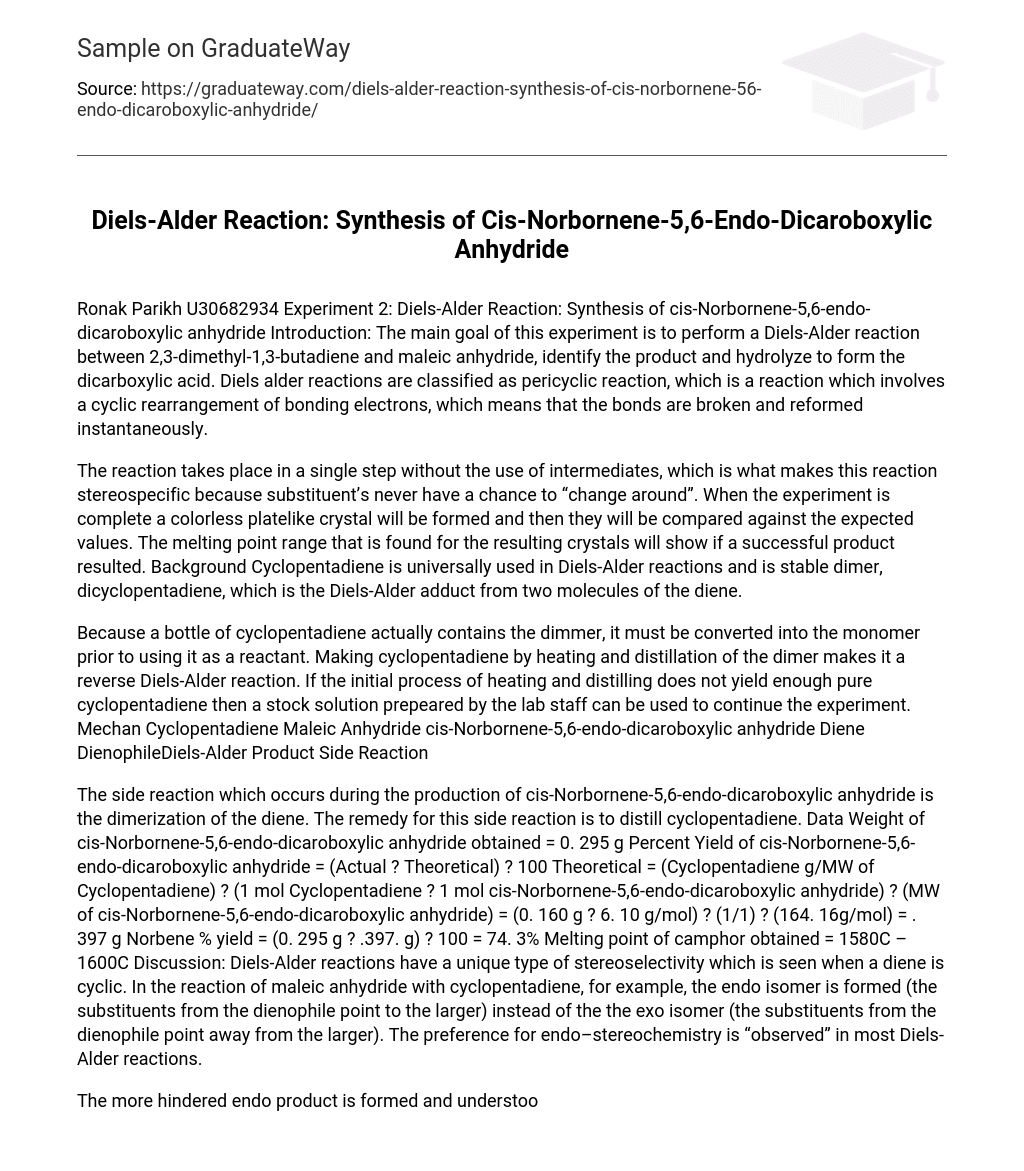Diels Alder reactions fall under the pericyclic reaction category, where a cyclic rearrangement of bonding electrons occurs. This means that bond breaking and reforming happen instantly. As there are no intermediates involved, this reaction takes place in one step, making it stereospecific. Hence, substituents cannot undergo any changes. Once the experiment is finished, colorless platelike crystals will be generated and compared to expected values.
The product’s success is demonstrated by the melting point range of the crystals that are produced. Dicyclopentadiene, which is a stable dimer created by combining two diene molecules through Diels-Alder addition, is commonly utilized in Diels-Alder reactions.
Discussion
Diene cyclicity leads to a distinctive form of stereoselectivity in Diels-Alder reactions. The reaction between cyclopentadiene and maleic anhydride results in the production of the endo isomer (where the substituents from the dienophile face towards the larger) rather than the exo isomer (where the substituents from the dienophile face away from the larger). This preference for endo stereochemistry is commonly observed in numerous Diels-Alder reactions.
The formation and understanding of the more hindered endo product is explained using molecular orbital theory, which shows that the overlap of the p orbitals on the substituents on the dienophile with the p orbitals on the diene is favorable and helps bring the two molecules together. In Diels-Alder reactions, it is common for the initially formed endo product to be isolated as an exo isomer. This is because the exo isomer is more stable due to having less steric strain than the endo isomer, and because the Diels-Alder reaction is often reversible under the reaction conditions.
The Diels-Alder reaction demonstrates a different type of stereoselectivity. It is important to observe that the diene and dienophile approach each other in parallel planes, resulting in a syn addition of the diene to the dienophile. Consequently, groups that are cis in the dienophile remain cis in the final product. Upon completion of the experiment, a favorable outcome was achieved, leading to the formation of white crystal plates. These crystals had a melting point range of 158-160 Degrees, which closely aligns with the literature value. The slight disparity in melting points can be attributed to the presence of a small quantity of impurities, potentially caused by human error.





